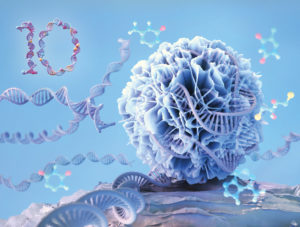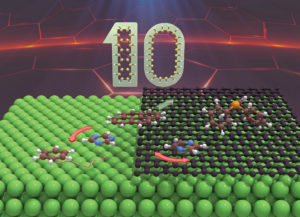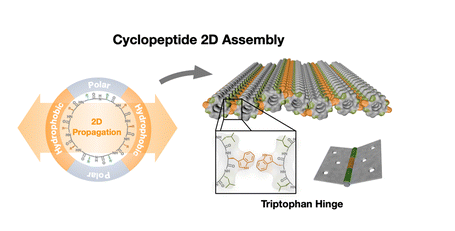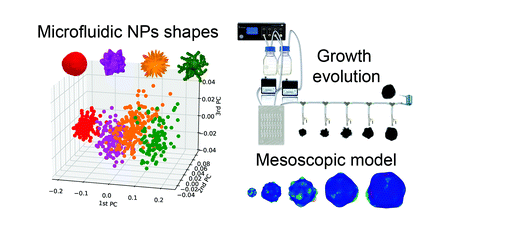Professor Raju Kumar Gupta, Advisory Board Member
Indian Institute of Technology, Kanpur
|

Dr. Raju Kumar Gupta is currently a Professor at the Department of Chemical Engineering, Indian Institute of Technology Kanpur, India. Prof. Gupta’s research group has made important contributions to the area of sustainable materials, green synthesis, nanostructured materials for wastewater treatment and energy storage applications. His current research interests are Photocatalysis for wastewater remediation and CO2 capture & conversion to fuels, Desalination, Perovskite solar cells, Recycling of spent batteries and Energy storage devices based on batteries. Prof. Gupta has been recipient of several fellowships and awards for his outstanding career in academic and research fields. Some of the fellowships and awards include DST Inspire Faculty Award 2013, IEI Young Engineer Award (2014-15), Young Scientist Award (2014-15), P. K. Kelkar Young Faculty Research Fellowship 2018, Distinguished Young Alumnus Awards 2021, PK Kelkar Young Faculty Fellowship 2022 and Fellowship of the Royal Society of Chemistry (FRSC) 2022. He has authored more than 140 research articles in international journals, 7 patents, 3 edited books, 18 book chapters, guest edited special issues for several international journals, and his work has been cited more than 11500 times. Prof. Gupta is an editorial board member of several international journals, as well as a member of scientific bodies. Some of his significant appointments include Founding Editor for Elsevier journal ‘Sustainable Chemistry One World’; Associate Editor for Elsevier journal ‘Solar Energy’; Editorial Board member for Nature Research journal ‘Scientific Reports’, Wiley journals ‘IET Nanodielectrics’ & ‘Journal of Polymer Science’, Elsevier journals ‘Current Opinion in Green and Sustainable Chemistry’ & ‘Materials Today Sustainability’; Editorial Advisory Board member for ACS journal ‘Environmental Science & Technology Water’, Wiley journal ‘Energy Technology’, Royal Society of Chemistry journals ‘Nanoscale Horizons’, ‘Reaction Chemistry & Engineering’ and ‘Molecular Systems Design & Engineering’. |
| 1) What do you like most about being on the Advisory Board for Nanoscale Horizons?
Nanoscale Horizons provides a versatile platform for applying nanoscale research in multidisciplinary backgrounds such as nanomaterials, photonics, energy, biomedical, environment and others. Being on the Advisory Board for Nanoscale Horizons makes me enthusiastic about pushing the boundaries of multidisciplinary nanoscale research for societal benefits and working with global researchers who are motivated to apply nanoscale research to solve the existing challenges in the world through scientific innovations.
2) What do you think of Nanoscale Horizons as a place to publish impactful nanoscience and nanotechnology research?
Nanoscale Horizons is dedicated to publishing impactful science and engineering for real-life applications. It becomes obvious by the Journal’s guidelines for highlighting new concepts developed or breakthroughs and how they differ from the existing research following future implications in the field of nanotechnology research. Furthermore, a range of publication formats, including communications, reviews, minireviews, focus articles, and comments followed by cover art, provides a thorough opportunity to contribute to the scientific community. The Journal publishes scientific breakthroughs in emerging topics and disseminates and acknowledges the exceptional publications that make the researchers and research stand out in nanoscience and nanotechnology research.
See some of Raju’s work here:
An activated carbon fiber supported Fe2O3@ bismuth carbonate heterojunction for enhanced visible light degradation of emerging pharmaceutical pollutants
Prasenjit Kar, Komal Shukla, Pratyush Jain and Raju Kumar Gupta
React. Chem. Eng., 2021,6, 2029-2041
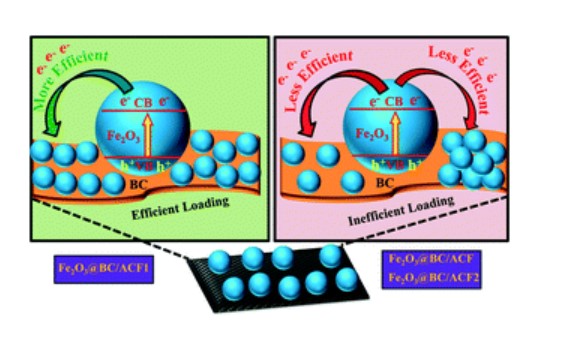
|
Yikai Xu, Community Board member
East China University of Science and Technology
|

Dr. Yikai Xu is a tenure-track professor at East China University of Science and Technology (ECUST). Before this he was a Leverhulme Early Career Fellow at Queen’s University Belfast (QUB). He obtained his BSc at ECUST and completed his PhD studies at QUB with Prof Steven E. J. Bell. He was the recipient of the 2019 Kathleen Lonsdale Royal Irish Academy Prize and is also recognized as an “Emerging Investigator” by the Journal of Materials Chemistry C and Analyst published by the Royal Society of Chemistry. He currently acts as an Associate Editor for Carbon Capture Science & Technology, a Community Board Member for Nanoscale Horizons and an Early Career Editor Board Member for Nano Materials Science. Dr Xu has co-authored 42 peer-reviewed articles in leading international journals, including Nat. Protoc., Chem, Nat. Commun., JACS Au, Angew. Chem., Nano Lett., Acc. Chem. Res., Chem. Soc. Rev. His research has received +4200 citations, H-index 21 per Google Scholar.
Dr Xu’s research group is currently focused on studying surface chemistry processes taking place on noble metal nanomaterials using mainly SERS. This entails the development of novel colloidal nanoparticles, their assemblies and polymeric hybrids with strong plasmonic properties and accessible surfaces. This allows the materials to act as both the enhancing substrate and the model material for operando SERS studies in catalysis and bioprocesses alike. |
| 1)What do you like most about being on the Community Board for Nanoscale Horizons?
I have been a Community Board member since 2019, being a part of the Nanoscale Horizons Community Board has meant a great deal to me. Being part of the board has many perks. It not only has been a great learning experience for me but also a huge career boost. The Community Board has also been a platform for me to meet peers and extend my professional network. However, my favorite part of the experience has been the valuable insight that I have been able to gain into academic publishing, from the early stages of setting up a journal to growing its brand.
2)What do you think of Nanoscale Horizons as a place to publish impactful nanoscience and nanotechnology research?
During my time as a board member, I have seen the journal’s reputation grow tremendously in the nano community and particularly in my area of research. When I started as a board member in 2019, there was only 1 publication related to SERS published in Nanoscale Horizons, now in 2025 this number has grown to 55! Undoubtedly this number will only continue to grow, and I look forward to continuing to participate in the growth of our journal in the future.
See some of Yikai Xu’s work here:
Jun Yi, En-Ming You, Ren Hu, De-Yin Wu, Guo-Kun Liu, Zhi-Lin Yang, Hua Zhang, Yu Gu, Yao-Hui Wang, Xiang Wang, Hao Ma, Yang Yang, Jun-Yang Liu, Feng Ru Fan, Chao Zhan, Jing-Hua Tian, Yu Qiao, Hailong Wang, Si-Heng Luo, Zhao-Dong Meng, Bing-Wei Mao, Jian-Feng Li, Bin Ren, Javier Aizpurua, Vartkess Ara Apkarian, Philip N Bartlett, Jeremy Baumberg, Steven EJ Bell, Alexandre G Brolo, Louis E Brus, Jaebum Choo, Li Cui, Volker Deckert, Katrin F Domke, Zhen-Chao Dong, Sai Duan, Karen Faulds, Renee Frontiera, Naomi Halas, Christy Haynes, Tamitake Itoh, Janina Kneipp, Katrin Kneipp, Eric C Le Ru, Zhi-Peng Li, Xing Yi Ling, Jacek Lipkowski, Luis M Liz-Marzán, Jwa-Min Nam, Shuming Nie, Peter Nordlander, Yukihiro Ozaki, Rajapandiyan Panneerselvam, Jürgen Popp, Andrea E Russell, Sebastian Schlücker, Yang Tian, Lianming Tong, Hongxing Xu, Yikai Xu, Liangbao Yang, Jianlin Yao, Jin Zhang, Yang Zhang, Yao Zhang, Bing Zhao, Renato Zenobi, George C Schatz, Duncan Graham, Zhong-Qun Tian
Chem. Soc. Rev., 2025, 54, 1453-1551
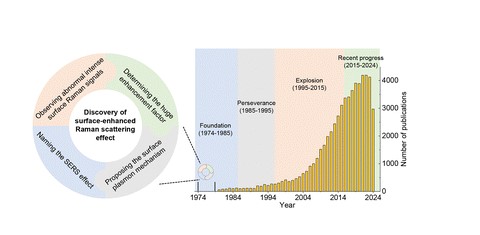
|
Yuan Fang, Community Board Member
Soochow University
|

Yuan Fang is a Professor at the Institute of Functional Nano & Soft Materials (FUNSOM) at Soochow University. She obtained her M.S. degree (2013) from Concordia University (advisor: Professor Louis Cuccia) and then received her Ph.D. degree (2017) from KU Leuven (advisor: Professor Steven De Feyter). She then pursued postdoctoral research at McGill University with Professor Dmytro Perepichka. Recognized for her exceptional research contributions, Dr. Fang was awarded the prestigious Alice Wilson Award by the Royal Society of Canada in 2019, underscoring her impact in the field. Her research focuses on supramolecular chemistry and the development of novel covalent organic frameworks (COFs), particularly in surface-confined systems. With a strong emphasis on chirality, she explores chiral self-assembly at surfaces, designs chiral COFs and chiral polymers. Beyond fundamental studies, her research is expanding toward the advancement of thin-film electronics and the next generation of bio-inspired functional materials, aiming to bridge nature’s principles with cutting-edge nanotechnology. |
| 1) What do you think of Nanoscale Horizons as a place to publish impactful nanoscience and nanotechnology research?
As a researcher in nanoscience, I find Nanoscale Horizons particularly valuable for its interdisciplinary approach, bringing together insights from chemistry, materials science, and physics to foster innovation. Beyond its strong reputation for publishing groundbreaking work, the journal’s commitment to rapid dissemination ensures that transformative discoveries reach the scientific community in a timely manner, accelerating progress across fields from materials science to nanomedicine. Over the past decade, Nanoscale Horizons has established itself as a leading platform for cutting-edge research, and I look forward to seeing how it continues shaping the future of our field.
2) Where do you see the nanoscience field in the next 10 years?
Everyone may foresee different opportunities for nanoscience, depending on their perspective. From my viewpoint, the next decade will likely bring major breakthroughs in precision-controlled synthesis, allowing atomic-scale engineering of 2D materials, covalent organic frameworks (COFs), and quantum dots with unprecedented control over defects and interfaces. This will enable next-generation energy storage and conversion technologies, such as all-solid-state batteries and highly efficient electrocatalysts for hydrogen production. We will also see significant advances in nanoscale characterization, particularly with in situ and operando techniques that provide real-time insights into dynamic nanoscale processes. High-resolution scanning probe microscopy and cryo-electron microscopy will push our understanding of quantum materials and interfacial chemistry to new levels. A key frontier will be nanoscience-driven quantum technologies. Materials such as moiré superlattices and twisted bilayers will further explore the ‘magic angle’ effect, leading to tunable superconductors and quantum transistors. Chirality-induced spin selectivity (CISS) is another emerging area that could revolutionize spintronics and molecular electronics. Another exciting direction is biomimetic nanoscience, where nature-inspired designs guide the development of advanced functional materials. For example, Bio-inspired nanorobotics, drawing from molecular motors and cellular processes, could enable autonomous nanoscale systems with applications in catalysis, sensing, and soft robotics. The next decade will be defined by deeper control at the atomic scale and the integration of nanoscale discoveries into real-world technologies.
See some of Yuan Fang ‘s work here:
Jie Ji, Yao Li, Sven Bernaerts, Kunal S Mali, Rui Ding, Hongzhen Lin, Louis A Cuccia, Steven De Feyter, Oleksandr Ivasenko, Lifeng Chi, Yuan Fang
Nanoscale, 2025,17, 11434-11440
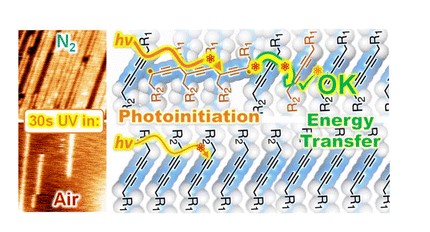
|
Qianqian Shi, Community Board Member
University of Newcastle
|
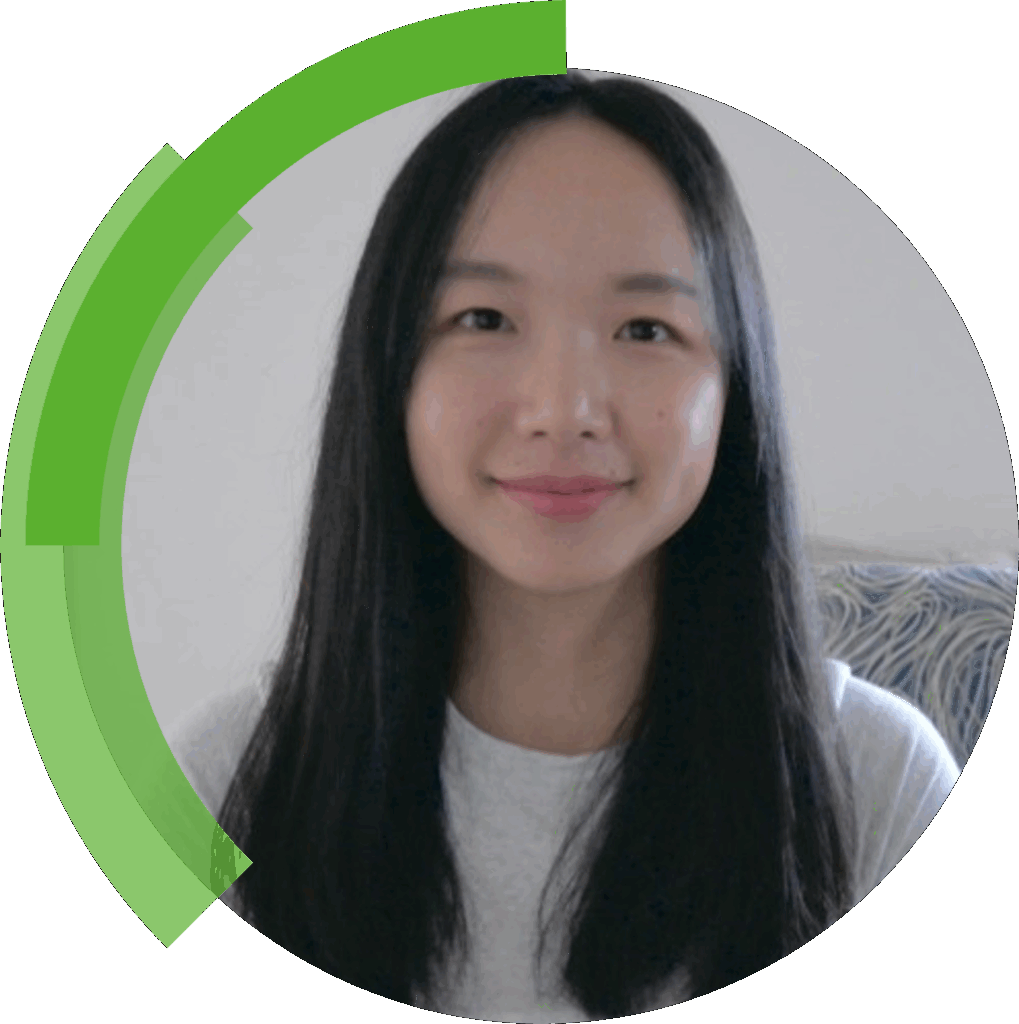
Qianqian Shi received her Ph.D. in Chemical Engineering under the supervision of Prof. Wenlong Cheng from the Faculty of Engineering at Monash University in April 2018. In January 2020, she was awarded the ARC Discovery Early Career Researcher Award (DECRA) Fellowship. In 2021, she received the Dean’s Award for Excellence in Research by a Research Fellow at Monash University. In 2024, she joined the Discipline of Chemistry in the School of Environmental and Life Sciences at the University of Newcastle as a Lecturer. Her research focuses on the design and fabrication of functional plasmonic nanomaterials for many fields including biology, photocatalysis, artificial leaves, and the development of ultrathin wearable devices. She has published more than 40 peer-reviewed research papers in leading materials science, physics, and chemistry journals, including Nature Nanotechnology, Advanced Materials, Advanced Functional Materials, Nature Communications, ACS Nano, Materials Horizons, Advanced Materials Technologies, Nano Energy, Advanced Materials Interfaces, ACS Photonics, and The Journal of Physical Chemistry C, among others. She has also contributed to two book chapters. Her work has received more than 2,800 citations, with an H-index of 27 (Google Scholar).
My research interests lie in the design, fabrication, and application of ultrathin, flexible 2D plasmonic nanomaterials, spanning the entire process from plasmonic nanocrystal synthesis to their self-assembly and applications in sensing, energy generation and conversion. To date, I have developed several methodologies for assembling “artificial plasmonic nanocrystals,” including gold nanospheres, gold nanocubes, Au@Ag nanocubes, gold nanobipyramids, and gold-silver nanoframes, to create customizable ultrathin 2D plasmonic nanostructures. Moreover, I have engineered various systems to enhance the functionality of plasmonic nanomaterials by introducing softness and flexibility. Notable advancements include 2D Janus superlattices that integrate properties of two distinct structures, allowing them to stand independently and significantly enhance Surface-Enhanced Raman Spectroscopy performance. I have also developed flexible Matryoshka nanoparticle films for information encryption and decryption, artificial leaves for solar-to-chemical energy conversion, soft cell-like ultrathin reactors for inward nanocrystal crystallization, and soft helical plasmene with both elasticity and chiral optical responses. Currently, my research focuses on designing functional plasmonic nanomaterials for applications in biology, photocatalysis, artificial photosynthesis, and the development of ultrathin wearable devices. |
| 1) Where do you see the nanoscience field in the next 10 years?
Nanoscience is at a pivotal stage, and I believe the next 10 years will bring transformative breakthroughs. We’re going to see rapid advancements in smart nanostructures—materials that can be precisely engineered to meet specific needs across various fields. From medicine and energy to electronics and environmental sustainability, nanoscience will push the boundaries of what’s possible.
One of the biggest developments will be in fabrication and synthesis techniques. Right now, producing functional nanomaterials can be complex and resource-intensive. In the coming decade, we expect more streamlined, scalable, and cost-effective methods that allow for precise, on-demand material design. Additionally, AI and robotics are likely to play a significant role in advancing these processes. This will be a game-changer, making nanotechnology more accessible for real-world applications.
I also see nanoscience playing a crucial role in solving global challenges. We’re looking at innovations in targeted drug delivery, safe, flexible, cost-effective, durable, and high-capacity batteries, advanced computing, and even climate change solutions like carbon capture. The ability to manipulate matter at the nanoscale will open doors to entirely new possibilities, reshaping industries and improving lives.
Overall, nanoscience isn’t just about working at a small scale—it’s about making a big impact. By 2035, I expect it to be deeply integrated into everyday technology, driving sustainable solutions and transforming the way we interact with the world.
2) In your opinion, how could members of the community be more involved with the journal?
In my opinion, community members could be more involved with the journal through several key initiatives:
- Increased Engagement on Social Media – Creating a Nanoscale Horizons community group on social media and inviting all members to join would facilitate discussions, keep members updated on the latest journal news, publications, announcements, and special issues, and encourage active participation.
- Workshops and Webinars – Participating in organizing workshops, webinars, and symposia would provide members with opportunities to engage directly with the journal and connect with fellow researchers.
- Contributions to Special Issues – Encouraging members to contribute to special issues on emerging topics would help expand the journal’s reach, attract new audiences, and promote cutting-edge research in the field.
- Outreach Activities – Hosting outreach initiatives across various regions would allow members to engage with students and researchers locally and internationally, fostering a more inclusive and diverse community within the journal.
See some of Qianqian Shi ’s work here:
Ren Wang, Guangzhao Mao, Dewei Chu, Noushin Nasiri, Yuling Wang, Marcela Bilek, Ken-Tye Yong, Wallace Wing Ho Wong, Stan Skafidas, Jefferson Zhe Liu, Yuri S Kivshar, Madhu Bhaskaran, Yuerui Lu, Benjamin Eggleton, Lining Arnold Ju, Qianqian Shi, Nam-Trung Nguyen, Chwee Teck Lim, Wenlong Cheng
Nanoscale Horiz., 2025, Accepted Manuscript |
Jiangjiexing Wu, Community Board Member
Tianjin University
|

Jiangjiexing Wu, an Associate Professor at Tianjin University, primarily focuses on the rational design and application of functional nanomaterials (nanozymes). As the first author or corresponding author, she has published over 30 SCI papers in journals such as JACS, Angew Chem, Adv Mater, and Nat Commun. She has been selected as one of the World’s Top 2% Scientists and has received prestigious honors, including “RSC Emerging Investigators”, “Gordon F. Kirkbright Bursary Award”, “ChemBioTalents”, “IAAM Scientist Medal” and “Future Chemical Engineering Scholars”. |
| 1)Where do you see the nanoscience field in the next 10 years??
In the next decade, I believe the nanoscience field will undergo a multidimensional evolution, advancing in several exciting directions such as nanomaterials, nanomedicine, and energy. For instance, the discovery of new materials will be exponentially accelerated with the help of artificial intelligence and quantum computing. To complement this, a special issue focus on negative results could be established to reduce redundant trial-and-error costs and enhance research transparency. Moreover, by leveraging synchrotron radiation and cryo-electron microscopy to build a globally shared libraries of nanoscale dynamic process atlas, nanoscience will shift from being speculative and invisible to becoming tangible and visible. Furthermore, nanoscience will transition from being lab-based to society-embedded, with increasing publication of industry-academia collaborative research for practical applications.
2)In your opinion, how could members of the community be more involved with the journal?
As a member of the community, I believe there are several ways we can become more actively involved with the journal. First, from my own experience, contributing to the emerging investigator special issue is one of the easiest and most accessible ways to get evolved. Second, inviting members of the community to serve as peer reviewers or guest editors for special issues would not only increase engagement but also help ensure the quality and diversity of the content published. Lastly, journals could host special events tailored to different community members, offering them a range of ways to engage. For example, academic + community writing workshops could be organized to create accessible summaries of key findings. On a personal note, I teach a graduate-level class, and I could collaborate with the journal to offer lectures through the class, which would not only raise the journal’s visibility but also create meaningful opportunities for me to engage directly with the journal.
See some of Jiangjiexing Wu’ work here:
Yijun Yu, Sheng Zhao, Deao Gu, Bijun Zhu, Hanxiao Liu, Wenlei Wu, Jiangjiexing Wu, Hui Wei, Leiying Miao
Nanoscale, 2022, 14, 2628-2637
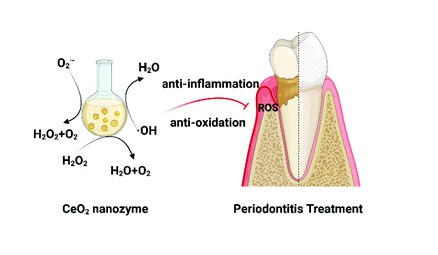
|































 Dr. Renren Deng is a professor at the School of Materials Science and Engineering, Zhejiang University (ZJU), China. In 2014, He received Ph.D. in Chemistry from National University of Singapore (NUS). From 2014−2016, he subsequently worked as a postdoctoral researcher at NUS and Cavendish Laboratory at Cambridge University. His research focuses on developing luminescent nanomaterials for applications in photovoltaics and biomedicine and understanding energy transfer through organic molecule−inorganic nanocrystal hybrid systems. Dr. Deng has published over 40 peer-reviewed papers in a range of prestigious journals including Nature, Nature Nanotechnology with 10,000+ combined citations. He has a number of awards including 2021 NSFC Excellent Young Scholars, and 2022 DPC’s Sturge Prize.Dr. Renren Deng is a professor at the School of Materials Science and Engineering, Zhejiang University (ZJU), China. In 2014, He received Ph.D. in Chemistry from National University of Singapore (NUS). From 2014−2016, he subsequently worked as a postdoctoral researcher at NUS and Cavendish Laboratory at Cambridge University. His research focuses on developing luminescent nanomaterials for applications in photovoltaics and biomedicine and understanding energy transfer through organic molecule−inorganic nanocrystal hybrid systems. Dr. Deng has published over 40 peer-reviewed papers in a range of prestigious journals including Nature, Nature Nanotechnology with 10,000+ combined citations. He has a number of awards including 2021 NSFC Excellent Young Scholars, and 2022 DPC’s Sturge Prize.
Dr. Renren Deng is a professor at the School of Materials Science and Engineering, Zhejiang University (ZJU), China. In 2014, He received Ph.D. in Chemistry from National University of Singapore (NUS). From 2014−2016, he subsequently worked as a postdoctoral researcher at NUS and Cavendish Laboratory at Cambridge University. His research focuses on developing luminescent nanomaterials for applications in photovoltaics and biomedicine and understanding energy transfer through organic molecule−inorganic nanocrystal hybrid systems. Dr. Deng has published over 40 peer-reviewed papers in a range of prestigious journals including Nature, Nature Nanotechnology with 10,000+ combined citations. He has a number of awards including 2021 NSFC Excellent Young Scholars, and 2022 DPC’s Sturge Prize.Dr. Renren Deng is a professor at the School of Materials Science and Engineering, Zhejiang University (ZJU), China. In 2014, He received Ph.D. in Chemistry from National University of Singapore (NUS). From 2014−2016, he subsequently worked as a postdoctoral researcher at NUS and Cavendish Laboratory at Cambridge University. His research focuses on developing luminescent nanomaterials for applications in photovoltaics and biomedicine and understanding energy transfer through organic molecule−inorganic nanocrystal hybrid systems. Dr. Deng has published over 40 peer-reviewed papers in a range of prestigious journals including Nature, Nature Nanotechnology with 10,000+ combined citations. He has a number of awards including 2021 NSFC Excellent Young Scholars, and 2022 DPC’s Sturge Prize.






